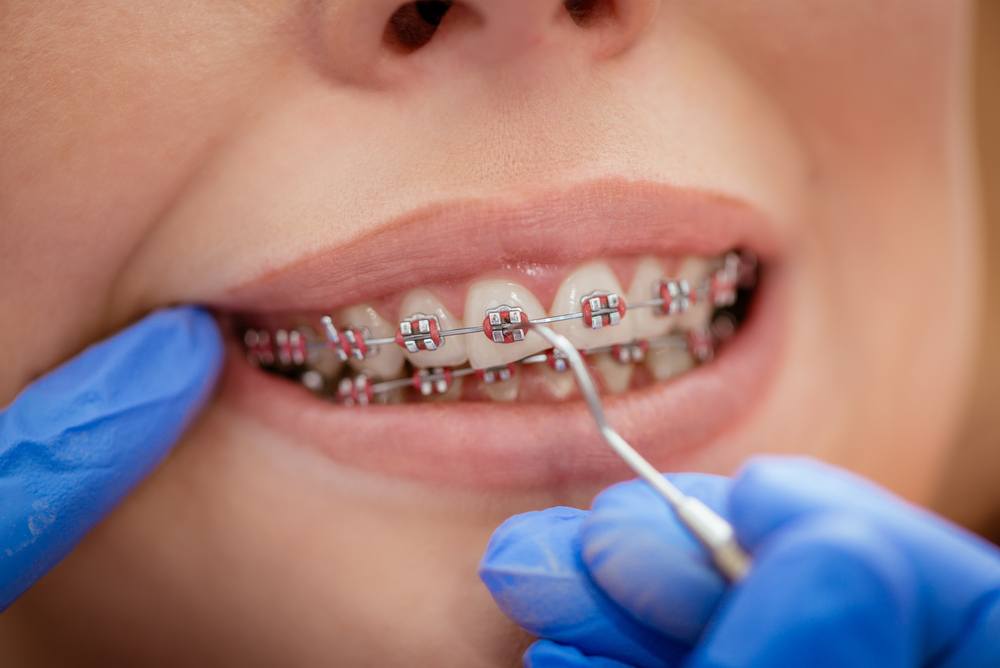Comprehensive Guide to Orthodontics Treatments for Remedying Dental Imbalances
Comprehending the complexities of each procedure, including their mechanisms, benefits, and potential drawbacks, is essential in making notified decisions regarding one's orthodontic therapy. As we browse via the extensive guide to orthodontic treatments for remedying dental misalignments, the detailed details of each technique will unfold, losing light on the course toward a harmonious and functional oral positioning.
Orthodontic Procedures Overview

Along with clear aligners and typical braces, orthodontists might also suggest various other treatments like headgear, palatal expanders, or retainers to deal with specific positioning problems (cumming orthodontics). These procedures are customized to each person's distinct demands and might entail a combination of therapies to achieve the preferred outcomes. Normal modifications and surveillance are critical components of orthodontic therapy to make certain development is on track and to make any type of necessary adjustments along the road. By undertaking orthodontic procedures, clients can not just achieve a straighter smile yet likewise enhance their overall dental health and feature.
Traditional Braces: Exactly How They Function
When thinking about orthodontic therapies for oral misalignments, standard braces stand out as a tried and true technique for remedying teeth placing. Conventional braces consist of braces, cords, and bands that function with each other to use constant stress on the teeth, gradually relocating them into the desired positioning.
As stress is used to the teeth through the braces, the bone surrounding the teeth is reshaped to support the brand-new tooth placements. Individuals will certainly need routine changes at the orthodontist's workplace to make sure the braces continue to apply the appropriate stress for efficient teeth motion.
Invisible Aligners: Pros and Cons
Invisible aligners provide a practical and very discreet alternative to conventional dental braces for dealing with oral misalignments. These clear, custom-made trays are basically unnoticeable when used, making them an attractive choice for individuals seeking a more cosmetically pleasing orthodontic therapy. Among the primary benefits of unnoticeable aligners is their removability, permitting less complicated maintenance of oral hygiene contrasted to standard braces. People can eliminate the aligners before eating or brushing their teeth, decreasing the threat of food obtaining embeded the appliance and streamlining the cleansing procedure.

Surgical Orthodontic Options
Surgical interventions in orthodontics existing feasible alternatives for resolving complex oral imbalances that may not be properly solved with traditional orthodontic treatments. While traditional dental braces and unnoticeable aligners can deal with numerous orthodontic problems, particular cases need surgical treatment to attain ideal outcomes. Surgical orthodontic options are commonly recommended for serious malocclusions, substantial jaw discrepancies, and situations where the underlying bone structure requires adjustment to accomplish proper alignment.
One common surgical orthodontic treatment is orthognathic surgery, which entails repositioning the jaws to fix functional concerns such as difficulty chewing or talking. This surgical procedure is usually performed in collaboration with an orthodontist that helps align the teeth before and after the procedure. Surgical orthodontics may additionally entail procedures to expose impacted teeth, eliminate excess gum tissue, or improve the jawbone to create a much more harmonious facial account.
Prior to thinking about surgical orthodontic choices, patients go through an extensive examination to establish the requirement and potential advantages of such treatments. invisalign. While surgical treatment might appear daunting, it can substantially enhance both the feature and aesthetics of the smile in situations where standard orthodontic treatments drop short
Retainers and Post-Treatment Treatment

Failing to conform with post-treatment care instructions can result in relapse, where the teeth progressively move back towards their initial placements. Constant retainer wear, great oral hygiene, and regular oral examinations are crucial for maintaining the outcomes achieved via orthodontic surgical procedure and ensuring the long-term stability of the fixed oral placement.
Final Thought
Finally, orthodontic treatments supply different choices for remedying dental misalignments. Standard braces make use of steel brackets and cables to shift teeth into appropriate positioning. Unseen aligners offer a more very discreet alternative however may not appropriate for all instances. Surgical orthodontic choices are available for extra extreme imbalances. Retainers are generally utilized post-treatment to maintain the new placement. In general, orthodontic treatments can properly boost oral wellness and aesthetic appearance.
As we browse through the thorough guide to orthodontic treatments for dealing with dental misalignments, the elaborate information of each approach will unfold, losing light on the course towards a functional and unified oral alignment. - orthodontist
One of the most usual orthodontic treatments is the usage of dental braces, which are composed of metal braces and cables that use mild stress to progressively move teeth right into the news wanted setting.When thinking about orthodontic therapies for dental misalignments, traditional braces stand out as a tried and true method for remedying teeth positioning. Furthermore, undetectable aligners might not be suitable for complex orthodontic concerns that need even more significant teeth activity, as they are usually suggested for light to modest cases. Retainers are customized orthodontic tools designed to hold teeth in their remedied settings after the conclusion of orthodontic therapy.
Comments on “How Cumming Orthodontics Addresses Common Braces and Invisalign Issues”